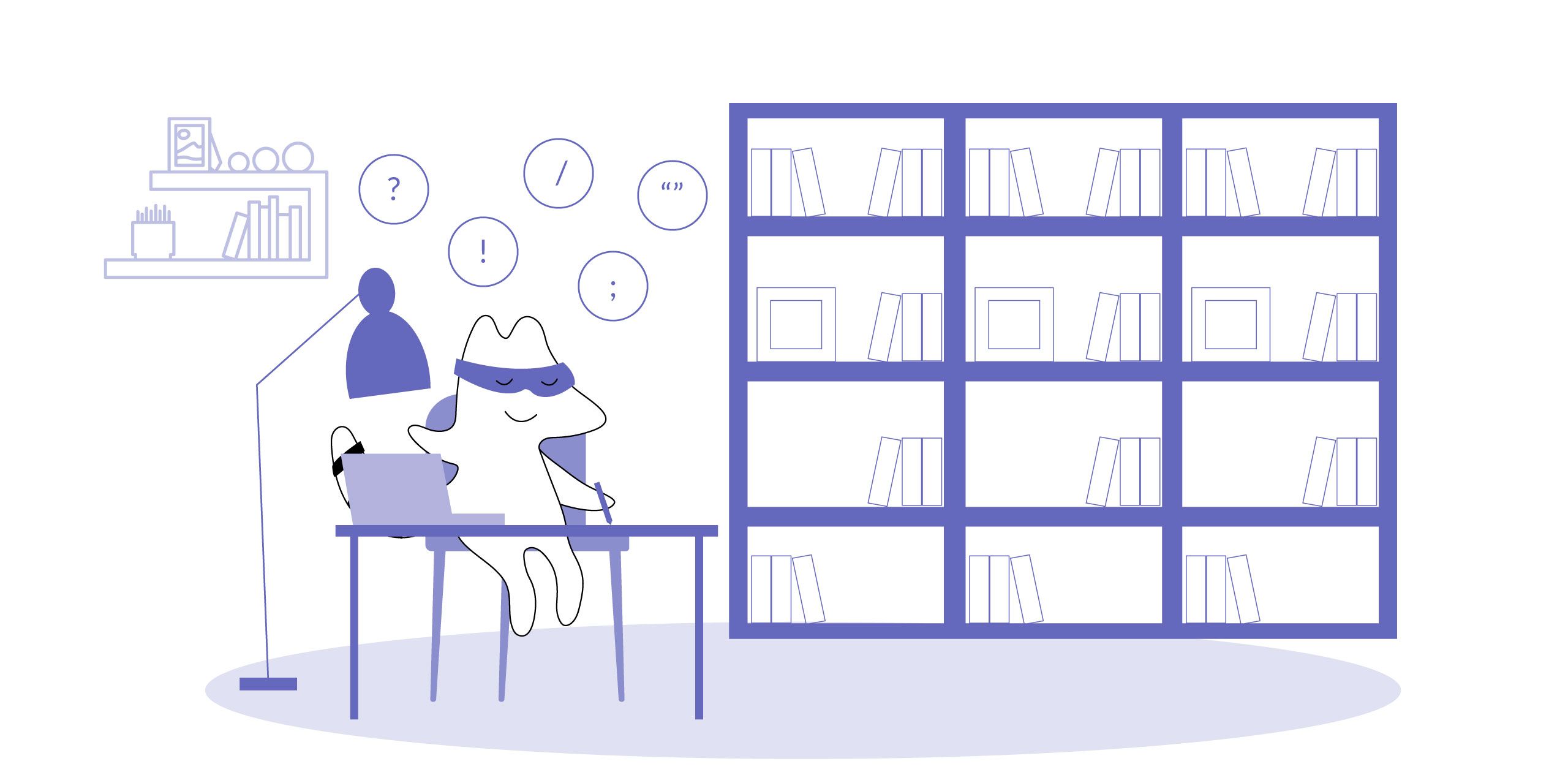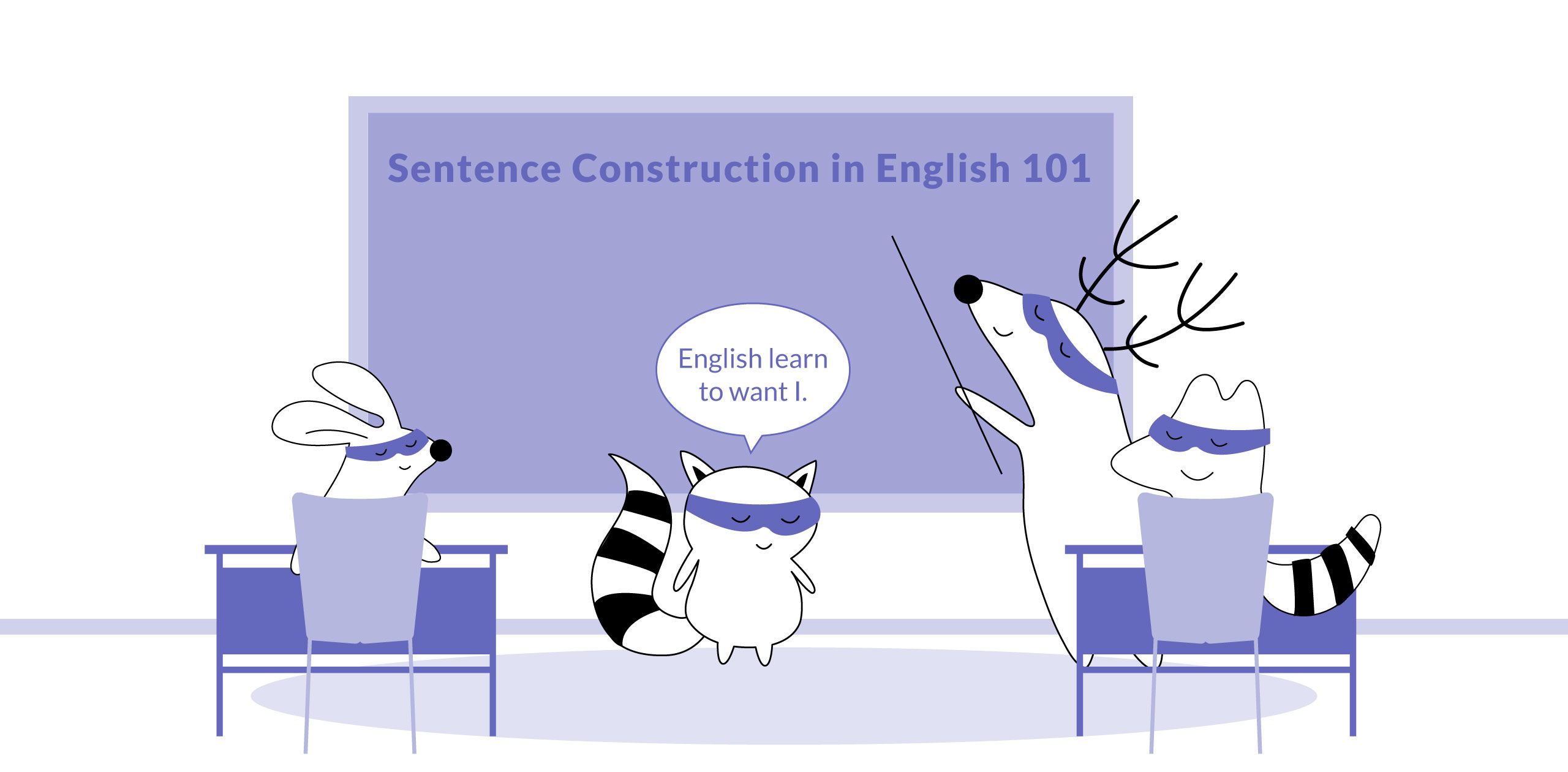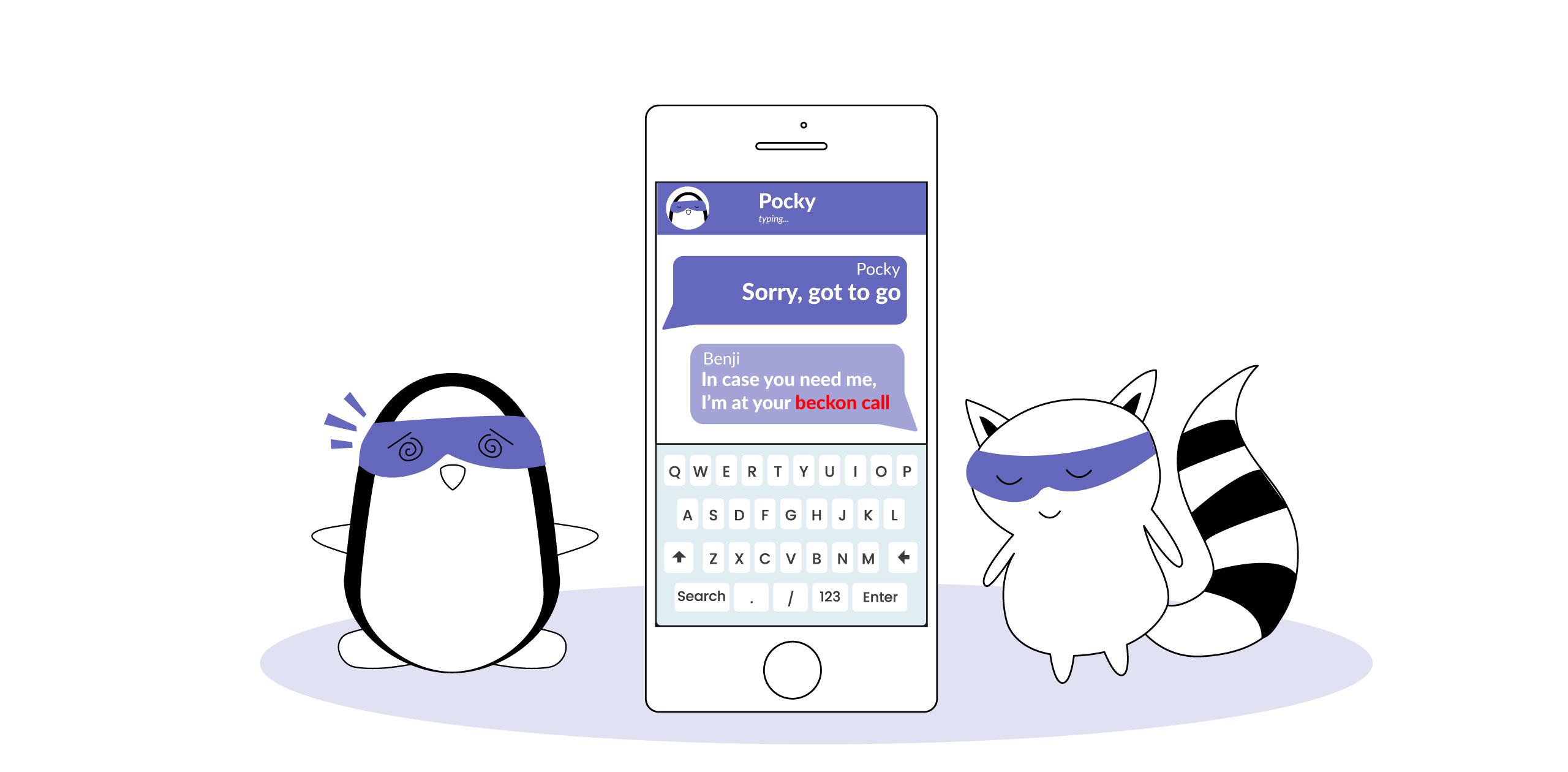
It's only natural if you want to master the grammatical side of your English writing, make it error-free and compelling even for native English speakers. However, while studying grammar rules and working to expand your vocabulary, it is easy to overlook the punctuation rules.
This is entirely unfair, as punctuation can be equally important when it comes to improving your English writing skills. Correct writing allows you to not only place accents in the text and achieve understanding with the reader, but it also reveals the writer's - your own - personality.
If you get confused about whether to put a comma before or after the preposition, or not to use it at all, whether to add a colon or a dash or if the apostrophe belongs where you're going to place it, we'll answer these and many others punctuation-related questions below. Let's dive in!
Learn English with Langster
Period / Full Stop
In British English, this punctuation mark is called a full stop or full point, and in American English, it's called a period. It is used at the end of most sentences and statements, including situations when you express a polite request using the verb "can."
Here are a couple of examples of using a period / full stop at the end of the sentence:
- There are three living plants in the room.
- Can you please write your address, I lost it.
Traditionally, punctuation in English dictates the use of a period when writing initials, titles, marking time, and making a decimal notation of a number, as in “the price is $1.99.” It is also used in website and email addresses and file names - such a punctuation mark is called “a dot” in English.
Dots are also used when writing abbreviations formed by shortening the words and abbreviations that came from Latin, such as, e.g., i.e., etc., vs., P.S., and others.
Comma
Commas are perhaps the trickiest punctuation mark in English punctuation rules. Let's try to figure out where and when you need to use a comma, where you can avoid them, and where you don't need a comma at all.
Homogenous Members of the Sentence
You need to use a comma when listing homogeneous members (or things of a similar nature) if you can put the conjunctions and/or instead of it.
- I will make risotto for dinner, take a fragrant bath, and read a few pages before bed.
In this example, making risotto, taking a bath, and reading are all homogeneous members because they are all actions the speaker plans to do.
To create a stylistic effect, conjunctions can stand in front of each homogeneous sentence member, but you should still put a comma between them to separate them.
- And she ran, and shouted, and laughed, and called us by name.
The Oxford comma, also referred to as serial comma, is the comma placed before the conjunction at the end of a list of things, for example:
- They had strawberry, chocolate, and pistachio ice cream flavors.
The Oxford comma helps remove ambiguity in sentences, but it's used primarily for stylistic purposes.

Introductory Words and Phrases
In English, as in any other language, there are often phrases used for clarification that help reveal the sentence's meaning more fully.
If the information provided in such a phrase is additional and the entire figure of speech can be removed from the sentence without changing to the central meaning, then you should put a comma before as well as after this phrase. For example:
- In English, as in any other language, punctuation marks can be tricky - but only at first glance.
- Harry Potter, the boy who lived, has become one of the greatest wizards of all time.
Depending on the construction of the sentence, job titles can also be separated by commas or can be switched around with the names of people holding the specified position. This rule is also valid for the designation of one representative from a particular group of specialists, objects, companies, films, and other proper names.
- My friend Jenny, a nurse, told me to eat more vegetables.
- My lawyer, Mr. Smith, told me not to talk about that.
- One of my favorite movies, The Holiday, will be a perfect pick for creating a Christmas mood.
Participle clauses, introductory phrases, and interjections standing at the beginning or middle of a sentence should also be separated by commas.
Here are the most commonly used introductory words and phrases:
- However, / Nevertheless,
- On the other hand,
- Furthermore, / Moreover,
- Therefore, / Consequently,
- For example, / For instance,
- In conclusion,
- Fortunately, / Unfortunately,
- Also, / Besides, / In addition,
It is important to note that the word "however" is considered introductory only in the meaning of "despite...". If, in a certain context, it means "no matter how," you do not need to use commas.

Complex Sentences
Punctuation rules in English state that complex sentences require a comma between independent clauses and dependent clauses, prepositional phrases, or before coordinating conjunctions. However, no punctuation is needed if the conjunctions and/or/but coordinate short, simple sentences. For example:
- I'm going to make a risotto, and you can help me with slicing the ingredients.
- With a big flower bouquet in her hands, Marry walked into the office.
- The weather is nice but windy.
You need to use a comma before as well as after a subordinate clause if it is placed at the beginning of a sentence. In cases where the subordinate phrase is found after the main clause, you don't need a comma. For example:
- If my flight isn't delayed, I'll be at home around 6 am.
- I can make some homemade burritos if you bring some cheddar cheese.
Commas mean the absence of semantic importance (the meaning) of the subordinate clause, which turns it into an accompanying circumstance or clarification. Therefore, punctuation marks in English are not necessary before conditional conjunctions and prepositions like because, after, until, that, since, yet, etc. For example:
- I am late because my flight has been delayed.
Among other things, commas are used to address a person by name in writing, separate numbers, as well as after the author's words in direct speech constructions in English.
Question Mark
A question mark is placed at the end of an interrogative statement. In addition, you can use a question mark enclosed in parentheses in a sentence to express doubt about the specified fact. You can also use a tag question to put an emphasis on a particular element of an affirmative sentence.
Here are the examples for each case:
- Did you receive my message?
- You received my message, eh?
- Plato, who was born in 427 BC (?), is one of the pivotal figures in the history of Ancient Greek and Western philosophy.
Exclamation Mark
An exclamation mark, sometimes also called exclamation point, is used to enhance emotions and make the statement more dramatic, convey surprise, joy, anger, distrust, etc. It may also occur enclosed in parentheses if you want to put an emphasis on the awesomeness of the fact. For example:
- What a fantastic job you've done on this project!
- This project took 4 (!) months to finish.
In informal correspondence, you can use an exclamation mark at the end of the salutation to appeal to a recipient you're close with. However, the formal style of writing dictates the use of a comma in this case.
Colon
A colon is used after the generalizing word and the main clause if followed by a list of things, disclosure, clarification, or confirmation of the main statement. For example:
- They have many ice cream flavors: strawberry, chocolate, and pistachio.
Colons are also used in direct speech and when quoting, while all the elements of the quoted speech are within the quotation marks. For example:
- And then Jack said: "You can do this."
It is important to note that short, direct speech is usually preceded by a comma.

Dash
A dash separates additional information, an expressive digression, and is also placed after the list of things before the generalizing word. In a certain context, a dash can play the role of a colon: separating the explanation part, summarizing a statement, or creating a contrast. For example:
- Strawberry, chocolate, and pistachio – these three ice cream flavors are my favorite.
Apostrophe
An apostrophe is most often used in the formation of the possessive case of nouns. In this case, it stands at the end of a noun and the top of it, followed by "s." For example:
- These are my nephew's favorite toys.
An apostrophe is also frequently used to create a contraction - a shortened form of a word, most often a verb, that omits certain letters or sounds. In such situations, an apostrophe represents missing letters, for example:
- I've made risotto for dinner. = I have made risotto for dinner.
Contractions are considered casual, so you should avoid them when writing in a formal style. It is also important to note that an apostrophe becomes a part of a word it is used with, so they shouldn't be separated by any other punctuation marks.
Quotation Marks
Single quotation marks (') are used in British English, and double quotation marks (") are used in American English.
- My favorite quote from the Harry Potter series says: “It takes a great deal of bravery to stand up to our enemies, but just as much to stand up to our friends.”
With their help, you can convey direct speech and quotations, express a figurative or rare meaning of a word, and formalize titles.
Brackets
Round brackets - parentheses - usually contain additional information, comments, remarks, and abbreviations.
- Cindy (the girl from the school) helped me with homework today.
Square brackets are used to correct the original statement - they contain missing information, the lack of which makes the expression sound incorrect. Often, this is how footnotes and reference lists to research and literary resources are created.
- Skiing at 80 [miles per hour] requires total concentration.
Slash
Slash is usually used to indicate the possibility of choice, the similarity of characteristics, time periods, abbreviations, and fractional numbers.
- Dear Sir/Madam,
- I will eat risotto and/or chocolate ice cream.
- I’ve written ¾ of my essay in one sitting!
- I want this hot dog but w/o [without] mayonnaise.
The Bottom Line

As you can see, a couple of correctly placed punctuation marks can make your statement more clear. They serve to avoid ambiguity in sentences, connect different clauses without changing the meaning, and make complex sentences easier to read through and understand.
Fortunately, punctuation rules in the English language are pretty straightforward. With a bit of practice, you will be able to sharpen every aspect of your writing skills - from composing essays to writing formal emails to putting footnotes to your research articles.
What's more, with our Langster app that contains many fun and bite-sized stories, you can practice reading. This will help you not only become a better reader but also help you pick up the correct usage of various punctuation marks - make sure to download and always have it at hand.









